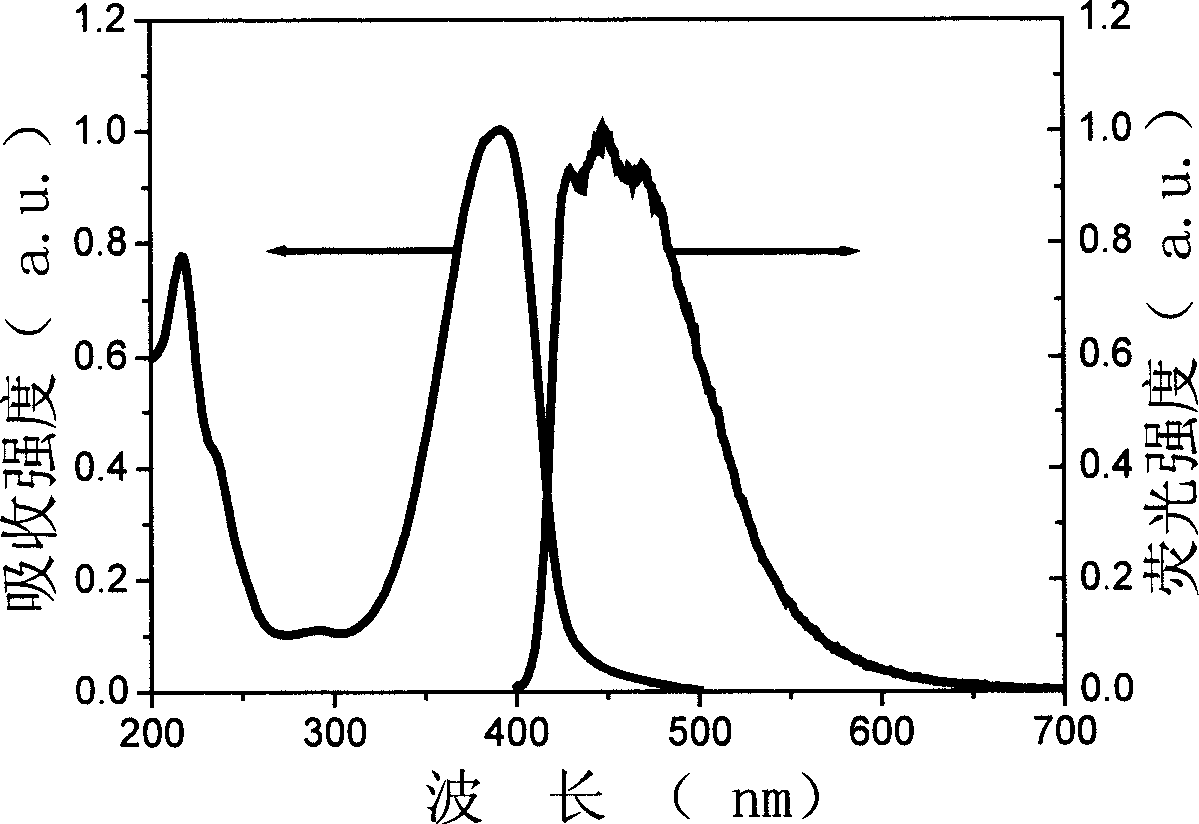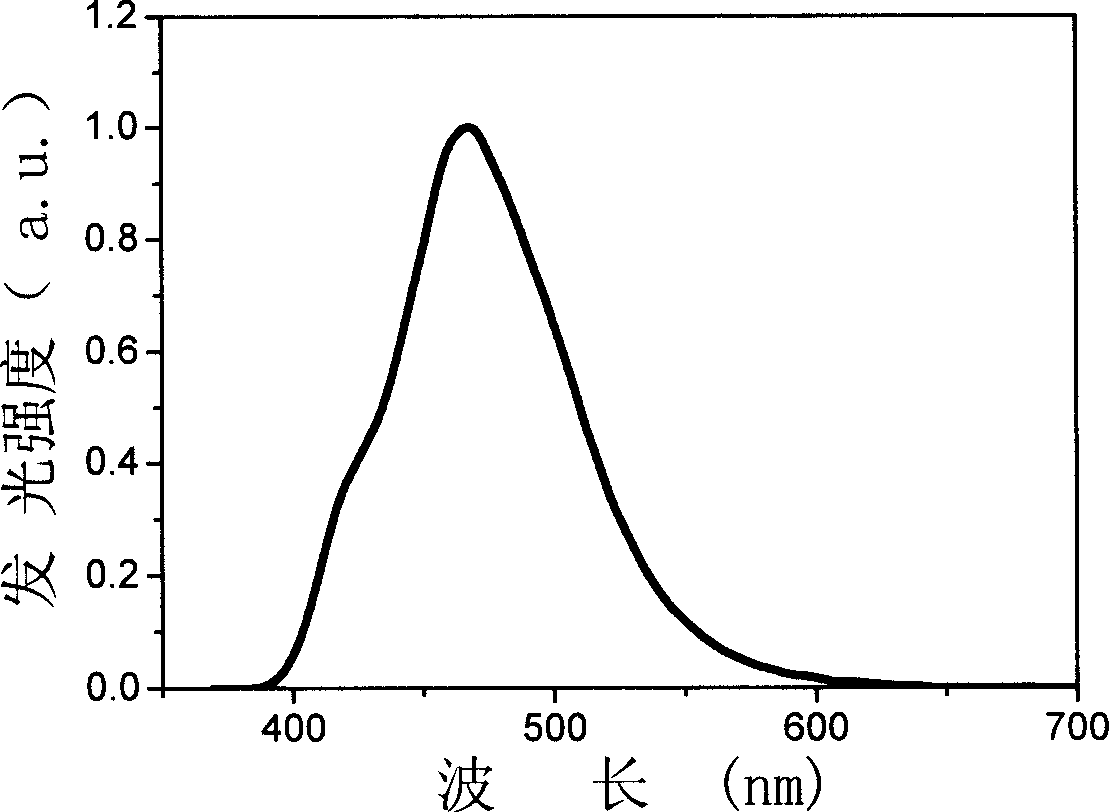Blue color electroluminescent macromolecular material and method for making same
A polymer material and luminescent technology, which is applied in the direction of luminescent materials, chemical instruments and methods, etc., can solve the practical gap and restrict the industrialization of polymer luminescent display screens and other problems
- Summary
- Abstract
- Description
- Claims
- Application Information
AI Technical Summary
Problems solved by technology
Method used
Image
Examples
Embodiment 1
[0056] Example 1: Synthesis of 2-(2-(4-amino-1,8-naphthalimide-9-)ethoxy)-5-hexyloxy-1,4-dibromobenzene
[0057] Under the protection of a gas atmosphere, 2.12g (10mmol) of 4-amino-1,8-naphthalimide was dissolved in 60ml of dimethyl sulfoxide, and then 0.56g (10mmol) of powdered hydroxide was added to the solution. Potassium, react at 120°C for ten minutes under electromagnetic stirring, then gradually add 4.59g (10mmol) 2-(2-bromoethoxy)-5-hexyloxy-1,4-dibromobenzene to the system, and react 14 Hours, repeated washing after chloroform extraction, drying, filtration, concentration, and column chromatography to separate the product to obtain the pure intermediate product 2-(2-(4-amino-1,8-naphthalimide-9-)ethoxy-1 -)-5-hexyloxy-1,4-dibromobenzene 3.59 g, yield 61%.
Embodiment 2
[0058] Example 2: Synthesis of 2-(2-(4-dimethylamino-1,8-naphthalimide-9-)ethoxy)-5-hexyloxy-1,4-dibromobenzene
[0059] Under the protection of -gas atmosphere, 0.590g (1mmol) 2-(2-(4-amino-1,8-naphthalimide-9-)ethoxy-1-)-5-hexyloxy-1 , 4-dibromobenzene was dissolved in 30 milliliters of dimethyl sulfoxide, then added 0.12 g (3 mmol) of 60% sodium hydride in the solution, reacted for 10 minutes at 60° C. under electromagnetic stirring, then added 2.840 g ( 20mmol) methyl iodide, reacted for 3 hours, washed repeatedly after chloroform extraction, dried, filtered, and the product was separated by column chromatography to obtain pure intermediate product 2-(2-(4-dimethylamino-1,8-naphthalimide- 9-) Ethoxy-1-)-5-hexyloxy-1,4-dibromobenzene 0.506 g, yield 82%.
Embodiment 3
[0060] Example 3: Synthesis of 2,5-bis(6-(4-amino-1,8-naphthalimide-9-)hexyloxy)-1,4-dibromobenzene
[0061] Under the protection of a gas atmosphere, 1.06g (5mmol) of 4-amino-1,8-naphthalimide was dissolved in 60ml of dimethyl sulfoxide, and then 0.84g (15mmol) of powdered potassium hydroxide was added to the solution , reacted at 30°C for ten minutes under electromagnetic stirring, then gradually added 1.366g (2.3mmol) 2,5-bis(6-bromohexyloxy)-1,4-dibromobenzene to the system, reacted for 14 hours, and chloroform After extraction, it was repeatedly washed, dried, filtered, and the product was separated by column chromatography to obtain the pure intermediate product 2,5-bis(6-(4-amino-1,8-naphthalimide-9-)hexyloxy-1-) -1,4-dibromobenzene 1.027g, yield 48%.
PUM
| Property | Measurement | Unit |
|---|---|---|
| wavelength | aaaaa | aaaaa |
| luminance | aaaaa | aaaaa |
| emission peak | aaaaa | aaaaa |
Abstract
Description
Claims
Application Information
 Login to View More
Login to View More - R&D
- Intellectual Property
- Life Sciences
- Materials
- Tech Scout
- Unparalleled Data Quality
- Higher Quality Content
- 60% Fewer Hallucinations
Browse by: Latest US Patents, China's latest patents, Technical Efficacy Thesaurus, Application Domain, Technology Topic, Popular Technical Reports.
© 2025 PatSnap. All rights reserved.Legal|Privacy policy|Modern Slavery Act Transparency Statement|Sitemap|About US| Contact US: help@patsnap.com



